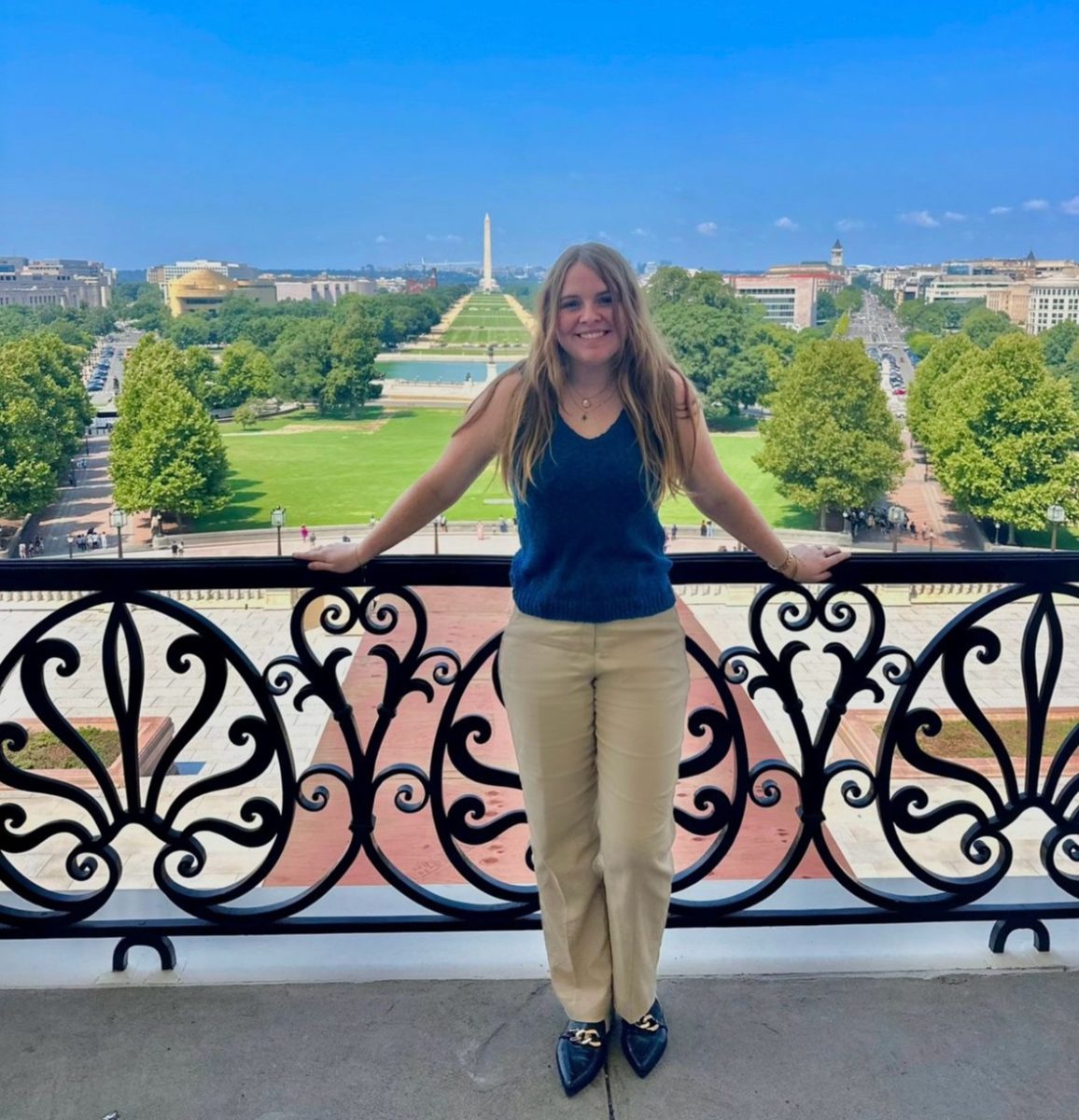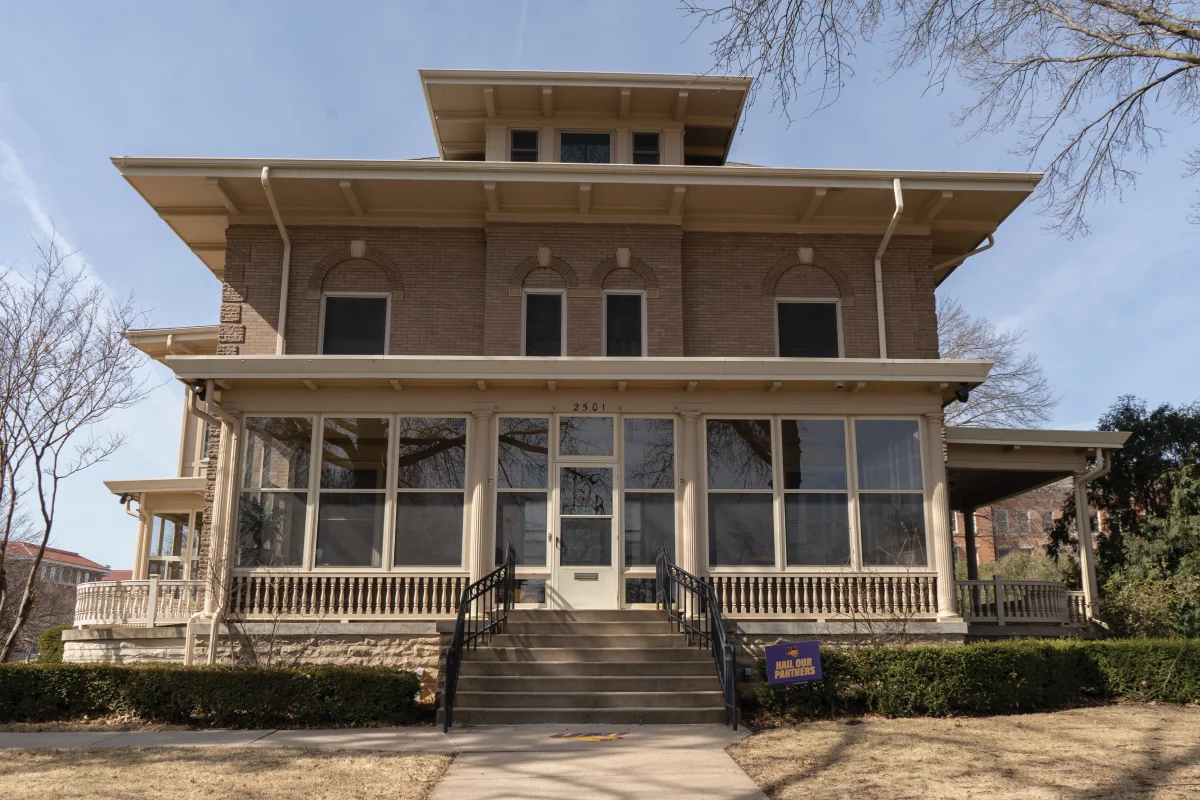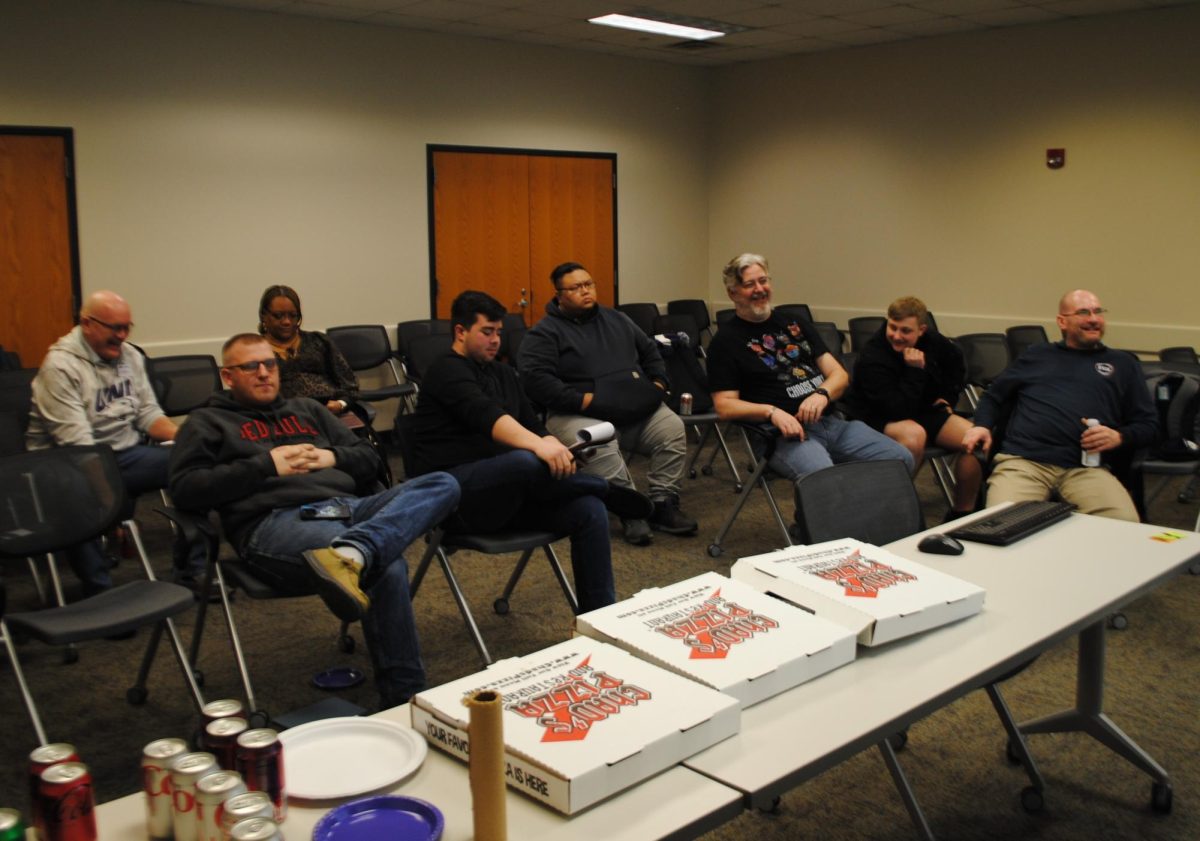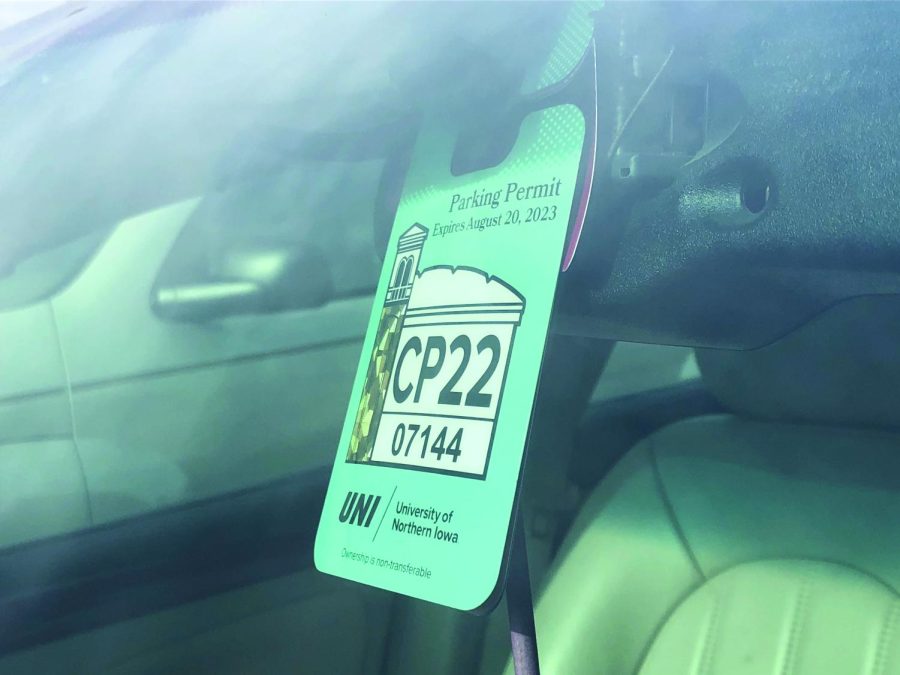Tucked away in the basement of the University of Northern Iowa’s Strayer-Wood Theatre, the costume studio is lively and busy. With shows like Ordinary Days and The Tempest, there’s always something to be done.
As you enter the main workspace, you’re greeted by theatre students on sewing machines creating costumes while others design additional props. The walls are adorned with hand-drawn and digitally illustrated renderings, and the tables overflow with fabric and accessories. The workshop embodies both functional design and playful creativity.
Amy RohrBerg, professor of theatre design and production since the ’90s, considers this space her home, as do many of her colleagues. “I came here right from my graduate program … This was my first job out of grad school, and I’ve never worked anywhere else,” she says.
RohrBerg’s passion and skill for her field are evident. Her colleague, Katrina Sandvik, theatre professor and costume shop technical director, notes “Amy’s been here long enough that she can tell us everything we have in the wardrobe.” Rohrberg quips “I live here.”
Sandvik is an alumna of the UNI Theatre Department. After traveling the country as a freelance artist for 10 years, she returned to Cedar Falls and worked in costume and scenic design with the Waterloo Community Playhouse and Black Hawk Children’s Theatre. In 2014, she returned to UNI as a professor and costume studio supervisor. “When I moved back here to be a designer in just one place, and it was the community I grew up in, that was an opportunity I just couldn’t refuse,” Sandvik says.
With the welcoming atmosphere and hands-on teaching from RohrBerg and Sandvik, students often engage in the overall design process, viewing their professors as mentors. Megan Hedtke, a senior studying theatre production and design at UNI, works alongside her professors to design for shows.
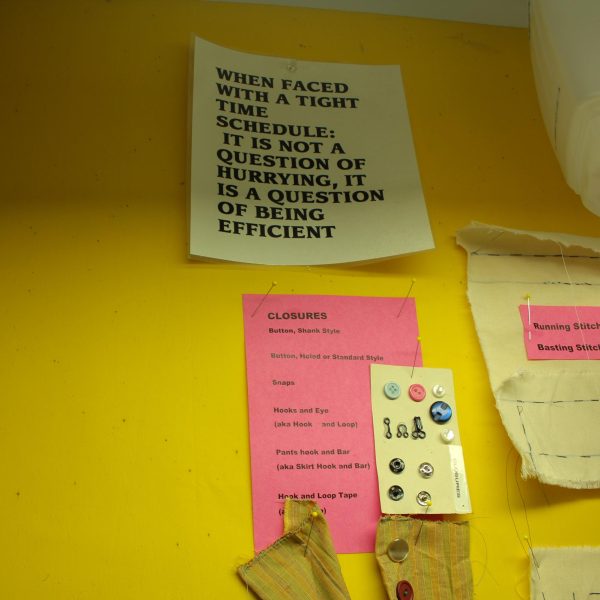
“I came into the program wanting to do set design. It wasn’t until my sophomore year that I took stagecraft costumes and found it enjoyable. Since then, I have taken the pattern and draping class. I’m now a TA, a co-designer and the designer for Ordinary Days,” Hedtke says. She discovered her passion for costume design through her theatre production courses.
After learning the intricacies of costuming and design, Hedtke found her calling. Her dedication and work ethic shine through her designs. While showing the renderings for Ordinary Days, Hedtke explains “One thing I like to do is personalize them to the actors. So this is the actor’s face that I traced from a photo.”
Hedtke’s renderings feature thoughtful details, making the designs anything but ordinary. “There’s a thought behind all of these. They are all wearing some kind of stripe in the beginning, and they all wear red at the end to reflect the storyline.”
Psychology plays a significant role in costume design, often overlooked by the audience. “The greatest thing about costume design, to me, is the ability to manipulate the audience without them knowing it, making them think things about the characters, whether they are true or not,” Sandvik says.
Many of these unique elements within the department may not be considered from an outside perspective.
Playful expression and functional design are crucial elements that create a continuous need for balance. Although the process can be complicated, the studio thrives on creative problem-solving.
“There’s an evolution of what happens when I have this original thought and figuring out how we make it last through a show. We have to balance how pretty and how rough and tough we can get,” RohrBerg explains.
Sandvik added “There’s a lot of problem-solving when making creations, and a lot of it comes down to knowing materials. You have to understand wood, metal, fabrics, glue, paint … all sorts of things, and how to use those in combination.”
Design barriers can arise, but the freedom to express is something RohrBerg and Sandvik embrace, “There are so many interesting, weird things. If it’s going to be weird and quirky, I like to embrace that,” RohrBerg says.
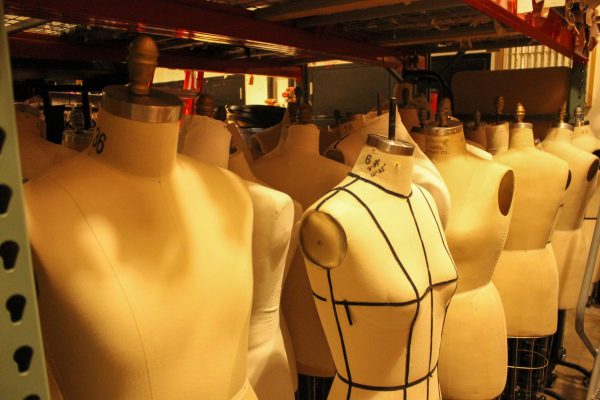
Sandvik echoes, “It can be the worst when you don’t have the right resources, but that’s when you have to be the most creative.”
Finding resources to execute a vision can be challenging in a smaller department, but it also has advantages.
“The biggest advantage of a smaller program is that you get to do many different things. You take courses in various areas to gain practical experience. Eventually, you become skilled at many different things,” Sandvik explains.
RohrBerg describes their teaching as a way for each skill to build on to the next. “You have to take lighting, costume, scenic courses because every show needs all of those elements,” Sandvik notes, referencing her experience as a theatre electrician.
A small yet developed department also features unique amenities. Separate spaces to dye garments, paint props and store clothing are all accessible for those in the program. “Getting to play in places like this is super fun. One of my favorite things to do is go into the costume storage. I’m surrounded by the things I love,” Sandvik says of the department’s costume wardrobe.
The costume studio fosters a culture of appreciation for one another and the strengths of each individual. The years of commitment to teaching and mentorship contribute to the program’s success.
“Amy taught me as a student, and it’s great to teach alongside her; we really love what we do,” Sandvik says.
RohrBerg confirms her passion for teaching: “I like the people, I love the challenging things we do, you learn something new every time, you work with fascinating students and people always come in with new ideas.” The duo, along with their student designer, agree that they’re eager to help you learn as long as you’re willing to try.



